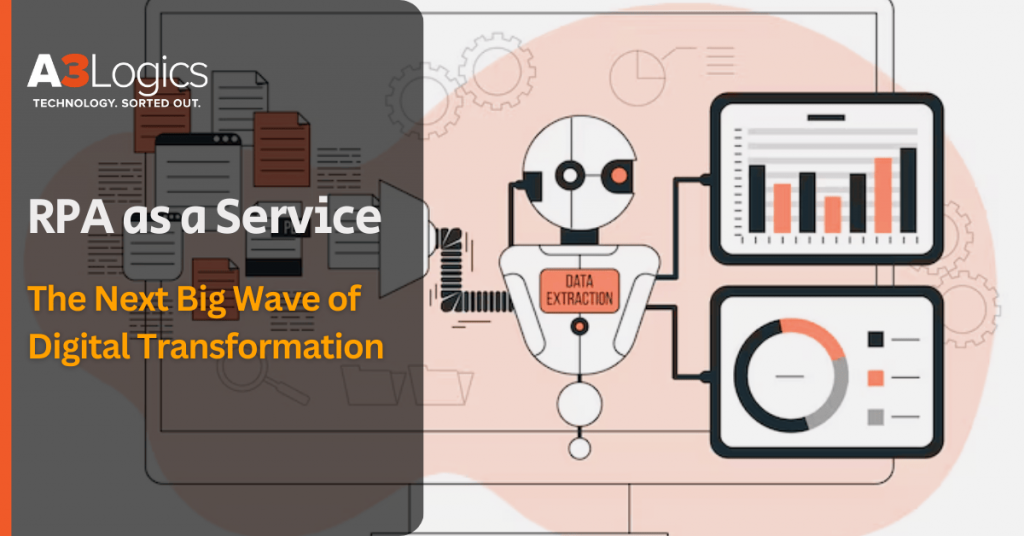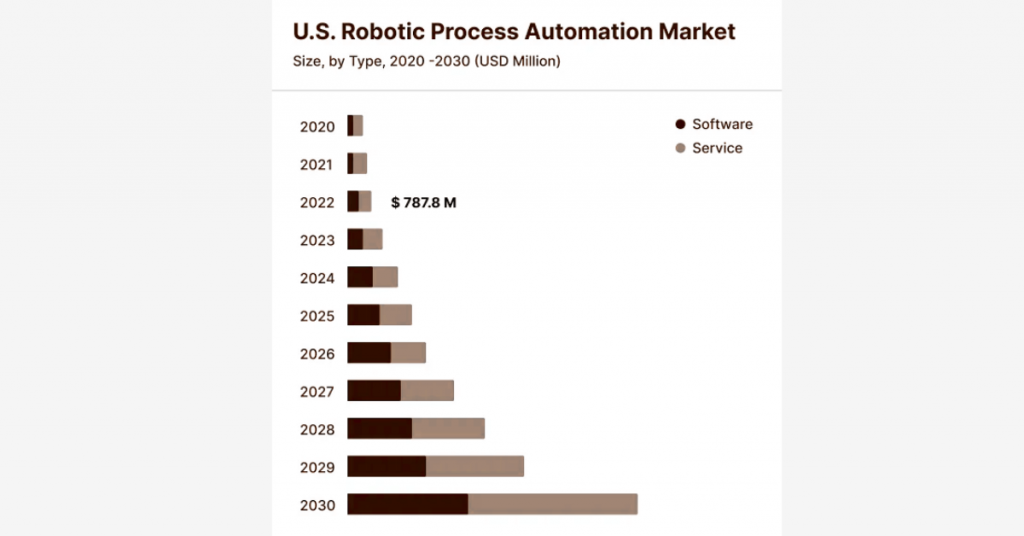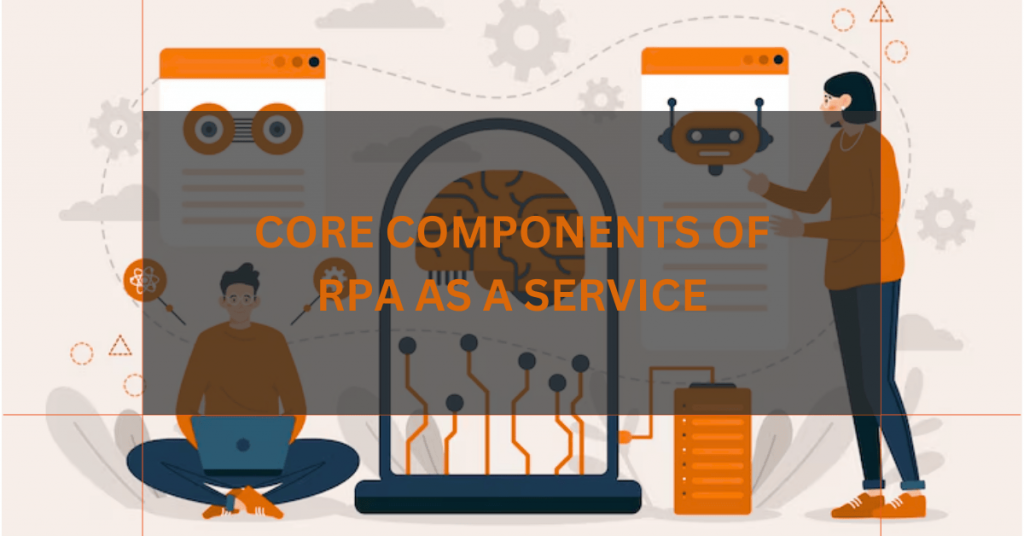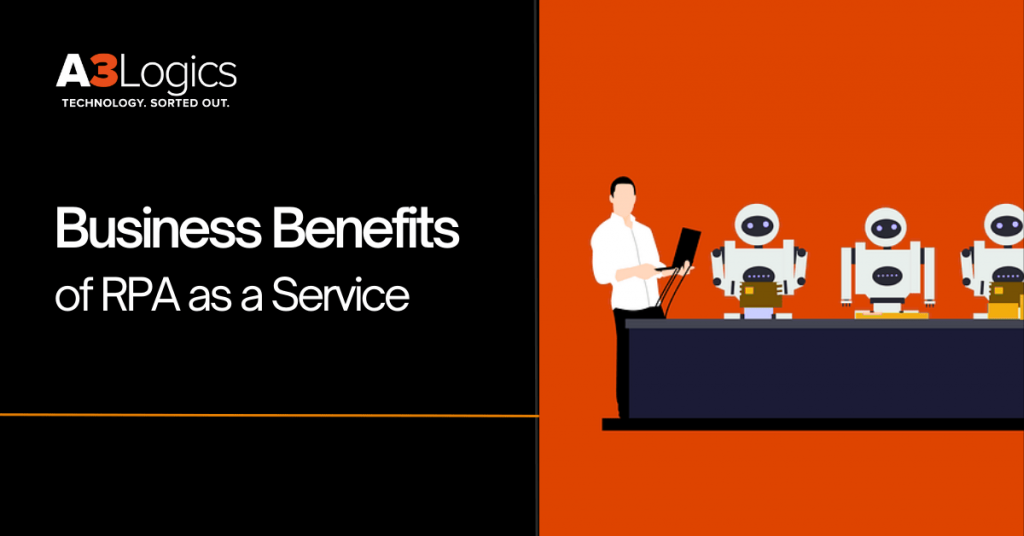Blog Summary
With RPA as a Service, you can enjoy the benefits of RPA services for your business needs. without investing much in infrastructure. It’s easier to execute, faster to scale, and requires minimal IT expertise.
In this blog, we’ll have a look at its benefits, use cases, key features and more. We’ll also find out how RPA as a service differs from traditional RPA.
Table of Contents
Introduction
Ever wondered what’s driving the remarkable shift in how routine business tasks are completed—faster, more efficiently, and with minimal human intervention? The answer lies in RPA as a Service, which enables businesses to automate processes efficiently without the burden of managing infrastructure or complex setups.

Automation now sorts emails, updates patient records without manual effort, and processes massive amounts of data in just minutes—or even seconds—with minimal human involvement. That’s automation for you.
This evolution isn’t driven by traditional RPA, which requires heavy setup and investment. Instead, RPA as a Service—a cloud-based model that outsources RPA to a third-party vendor—enables businesses to automate processes with minimal infrastructure and lower costs. Let’s discuss the aspects of robotic process automation as a service.
> Introduction to RPA as a Service (RPaaS)
As we mentioned, RPA as a Service takes the efficiency of RPA to the next level. But let’s first understand what it actually is.
In RPaaS, you don’t have to set up RPA tools, instead you outsource the task to a third-party. The service provider handles the rest of the tasks – setup, implementation, updates, and maintenance.
> Why RPaaS is reshaping digital transformation for businesses
Let’s quickly have a look at why businesses are turning to RPaaS for digital growth instead of traditional RPA –
No Heavy Setup Needed
RPaaS runs on the cloud; businesses needn’t install a heavy infrastructure or servers. Instead, they can start using RPA bots created by service providers instantly. This way they save time, money, and any resource or investment on technical training.
Up-to-Date RPA Tools
Unlike traditional RPA, the RPA service provider in RPaaS handles all patches, updates, and maintenance tasks. This means you can rest assured that your bots will stay current with the latest features and will be free from bugs and security issues.
Lesser IT Load
Traditional RPA places a significant burden on your in-house IT team to manage everything, including setup, infrastructure, integration, and maintenance. RPaaS takes this burden off, allowing them to focus on bigger business issues instead of handling bot maintenance.
Get Quicker Results
The heavyweight technical tasks, such as setup and maintenance, are handled by the provider. This means businesses can initiate the automation process immediately, increase productivity, and thereby generate revenue more quickly.
Market Trend of RPA as a Service

- RPaaS can give cost savings from 20% to 60%.
- The worldwide market is expected to grow to $11 billion by 2027.
- 70% of leaders are confident that AI-based automation will take over traditional RPA.
- 22% of an employee’s time is spent of performing repetitive and laborious tasks.
- With the help of RPA as a service, a global MNC was able to decrease manual-intensive tasks by 70%, saw 50% faster processes, and saw significant net savings.
Core Components of RPaaS

1. Cloud infrastructure and hosting
As a core component of RPA as a Service, cloud infrastructure and hosting let businesses deploy, manage, and scale automation solutions on demand. It typically utilizes bots hosted in the cloud, leading to efficient automation and process optimization. The infrastructure lets you scale automation capacity based on demand, and hosting makes applications accessible over the internet through the cloud.
2. Software bots and orchestration tools
These are the core agents that help execute automated tasks. The bots mimic human actions to communicate with digital apps and systems. Developers use orchestration tools to design and build workflows that define the tasks RPA bots need to perform.
3. Maintenance, updates, and scalability are handled by providers
Knowing that RPaaS depends on bots, providers ensure that they function optimally. For this, they regularly update the software, apply security patches, and keep the platform current with security enhancements, latest features, and bug fixes.
4. Pay-as-you-go pricing model
Instead of fixed subscriptions, in robotic process automation as a Service, customers are billed on their actual usage, for instance, as per the number of bots they are using. This way, businesses can scale their automation efforts as required without the need for a large upfront investment.
Top Use Cases of RPaaS
1. Invoice and payment processing
In RPaaS, regardless of the format, RPA bots use the OCR functionality to extract data from invoices. They compare the data with other relevant documents and resolve any mismatchs.
2. Customer support automation
The bots used in robotic process automation services can be configured to analyze relevant information from incoming emails, forms, and other documents fed into CRM systems. This way, they can address common customer queries. Not only that, but they can also be used to automate the process of categorizing, logging, and routing customer queries and issues, ensuring that the appropriate teams handle the relevant queries.
3. Employee onboarding and offboarding
RPA as a Service makes the employee onboarding and offboarding simple. It automates tasks like creating employee login IDs, updating HR systems, and sending onboarding emails. Once, an employee decides to leave, tools can help generate exit paperwork, revoke system access, and update the HR records.
4. Data migration and cleanup
RPA tools excel in extracting data accurately, quickly, and consistently from a variety of sources such as databases, legacy systems, and cloud storage. These tools can further assist in quality assessment and data profiling – scanning and analyzing data structures, identifying duplicates, and much more. Furthermore, RPA can also cut data migration time by almost 50%.
5. Compliance reporting and auditing
By deploying robotic process as a service, you can automate the process of generating compliance reports. This ensures accurate reporting. It can also help find out potential fraud by analyzing data for unusual patterns.
6. IT helpdesk automation
RPaaS can be leveraged in IT helpdesk to automate tasks like user account provisioning, password resets, and software patching, freeing up helpdesk agents to handle more complex issues.
7. Claims processing in insurance
There are multiple ways in which RPaaS can accelerate claims processing in insurance; It can automate tasks like verifying eligibility, generating settlement notices, and assessing coverage. RPA chatbots can also provide claim status updates and guide common customer queries regarding the claims process.
8. Loan approval workflows in banking
RPA can help automate eligibility checks based on credit scoring. It can validate the genuinness of documents; bank and, income statements, and credit reports, reducing the risk of fraudulent applications and ensuring compliance.
Business Benefits of RPA as a Service

1. Lower Upfront Investment
As compared to traditional RPA, RPA as a service offers lower upfront investment because it eliminates the need for a large infrastructure, and as stated earlier, it operates on a pay-as-you-go model. Additionally, RPaaS solutions can be deployed quickly allowing businesses to start automating tasks and avoiding delays.
2. Faster Time to Deployment
The deployment process of RPA as a service doesn’t require installation of hardware or software or licenses; everything is managed by the vendor’s cloud infrastructure, pre-tested and ready to deploy. Instead of months, the bots can be deployed in weeks since there is no lengthy setup involved.
3. On-Demand Scalability
The on-demand scalability in Robotic Process Automation as a service refers to the ability to quickly and easily adjust the number of RPA bots and their resources in response to dynamic business needs. You can scale your automation capacity during peak times and scale down when the demands are low, all without any manual adjustments or infrastructure investments.
4. Minimal IT Involvement
In simple terms, businesses can access and deploy RPA bots without any need for extensive in-house IT expertise. RPA automation services are hosted on the cloud; The provider takes care of all aspects of the service – software updates, security, and infrastructure.
5. Continuous Monitoring & Maintenance
RPaaS service providers ensure that RPA bots adapt to the fluctuating business needs and technological advancements. This also involves integration with new systems, updates to the software, and any necessary adjustments to the bot’s behavior.
6. Greater Flexibility for SMBs
RPaaS provides small and medium-sized businesses with great flexibility due to its adaptable and scalable nature. It enables them to scale automation on demand without making any large investments in infrastructure. Companies can start automation on a small scale and adjust their automation capability as they evolve.
Security in RPaaS Platforms
RPaaS platforms offer a high level of security. Let’s have a look at best practices followed by RPaaS platforms –
Security Features –
- Automated Maintenance
The RPaaS providers handle software maintenance tasks, including security patches and security features.
- Abide By Industry Standards
Most RPaaS platforms comply with international security standards lke ISO/IEC 27001, demonstrating that they adhere to stringent security protocols.
- Data Encryption
Data is protected with strong encryption algorithms such as AES-256 military grade encryption.
- Audit Logging
Several RPaaS platforms offer vast audit logging, allowing for the identification of security issues and comprehensive tracking of activities.
Challenges and Considerations
1. Data privacy and cloud security concerns
In RPaaS, a third-party service provider manages sensitive data. If not handled correctly, sensitive data such as customer information, financial details, and business information can be exposed. On similar lines, inadequate cloud security can open a doorway to security breaches, especially if adequate access controls are not correctly configured.
2. Integration with legacy systems
In some instances, the legacy system may lack the necessary APIs for seamless integration with modern robotic process automation (RPA) platforms. Another challenge that legacy systems pose is that they sometimes use different formats, naming conventions, and storage methods compared to modern systems. From a security perspective, legacy systems may have vulnerabilities or outdated security protocols that could be exploited if not adequately addressed during the integration process.
3. Vendor lock-in risks
Robotic Process Automation as a service is vendor-dependent and poses significant challenges. Complex integration with other systems may make switching tough. Secondly, if there are fewer alternatives, a vendor may increase prices. There have been cases where clients have had to deal with security issues because the vendor experienced data breaches.
4. Choosing the right RPaaS provider
Choosing the right RPaaS can be challenging because of the wide range of options available. In such a case, it can be difficult for you to evaluate the right features, reliability, and pricing models. Another challenge is to find an RPaaS provider that adheres to security and compliance standards and that can promise seamless integration of RPA systems into existing platforms.
5. Change management and employee training
Providing employees with adequate training is important. They may need to have new skills, may have to adqapt to changes, understanding the automation process, and potentially learn to code.
How RPaaS Differs from Traditional RPA
| Factor | RPaaS | Traditional RPA |
| Deployment | Runs on the cloud. No server setup required. | You need to set up your own infrastructure and servers and install RPA systems. |
| Cost | Runs on a pay-as-you-go model. | A high upfront cost is incurred for hardware, licenses, etc. |
| Maintenance | Handled by the service provider. No need for an internal service team. | You are responsible for handling system maintenance and addressing any issues. |
| Scalability | RPaaS can be scaled up and down based on fluctuating business needs. | Scaling can be a challenge, as you may need additional licenses and hardware as your business scales up or down. |
| Updates | The provider rolls out updates automatically and performs maintenance tasks. | You need to manage and test updates and perform maintenance tasks manually. |
Future of RPaaS
- Hyperautomation with RPaaS + AI/ML/Chatbots
RPaaS providers will increasingly offer hyperautomation features, combining RPA tools such as RPA chatbots with next-generation technologies like artificial intelligence, machine learning, and process mining. The intention is to automate complex business processes and optimize workflows, in addition to enhancing operational efficiency.
- Growth of RPA marketplaces and prebuilt bots
The RPaaS market is experiencing a significant surge driven by the development and adoption of prebuilt bots. Businesses of all sizes and types can access RPA marketplaces to find preconfigured bots designed to perform specific business tasks. These can accelerate the automation process, reduce human errors, and lead to faster turnaround times.
- Industry-specific RPaaS offerings
Industry-specific RPaaS offerings are shaping the future of RPA automation by delivering solutions that cater to unique business needs. Instead of generalized tools, RPA service providers are now designing bots for specific sectors such as healthcare, automotive, finance, retail, real estate, etc.
- Predictive maintenance and proactive issue resolution
In the future, RPA as a Service, will evolve into a smarter, predictive service powered by AI, ML, and chatbots. It won’t just incorporate RPA as a mere tool to automate tasks but also detect impending issues and, even more importantly, trigger proactive preventive actions automatically, thereby reducing downtime and smoothing operations.
Why A3Logics for RPA as a Service?
– End-to-end RPaaS solutions
A3Logics provides end-to-end RPaaS solutions from development to deployment. We help select the RPA tools, design workflows, and integrate them with your existing systems. We also provide complete support for deployed RPA bots.
– Expertise in cloud automation and security
We bring deep expertise in cloud automation and security. Our teams design secure and scalable automation workflows on trusted cloud platforms backed by industry compliance standards and best practices.
– Scalable, secure, and cost-effective deployment
We build solutions that match your growing business needs and include robust security measures to ensure data protection. Our cloud-based model helps you eliminate upfront expenses and offers a cost-effective way to automate tasks.
– Industry-focused automation strategies
We tailor automation techniques to the specific needs of an industry, aiming to improve productivity, efficiency, and safety while reducing costs.
Conclusion: RPA as a Service
RPA as a service is transforming the way businesses approach automation. It helps streamline essential processes, giving a faster, more innovative, and more cost-efficient way to handle repetitive tasks. It eliminates the need for a complex setup, purchasing licenses, and managing systems independently.
Since everything runs on the cloud, you don’t have to buy servers or employ large IT teams to manage them. The provider already provides you with tools and bots that are ready to use without any setup delay.







